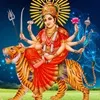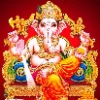India is renowned worldwide for its festivals and traditions. Each festival has its own unique color and significance. These colors not only enhance the beauty of the celebrations but also hold deep spiritual and cultural meaning.
Main traditional colors of festivals and their significance
Red color – power and energy
- Red symbolizes Goddess Durga and Shakti.
- It represents courage, valor, and enthusiasm.
- Red holds special significance on occasions like Navratri, Karva Chauth, and weddings.
Yellow color – auspiciousness and knowledge
- Yellow is associated with the Sun and Goddess Saraswati.
- It symbolizes peace, wisdom, and positivity.
- There is a tradition of wearing yellow clothes during Vasant Panchami and Ganesh Puja.
Green color – prosperity and good fortune
- Green color signifies life, progress, and nature.
- Women especially use green color during Hariyali Teej and Sawan.
White color – peace and purity
- White color symbolizes Goddess Saraswati and peace.
- It represents simplicity and spiritual purity.
- Wearing white clothes during Pitru Paksha, puja-path, and Shanti Path is considered auspicious.
Blue color – courage and depth
- Blue is associated with Lord Krishna and Lord Shiva.
- It symbolizes patience, devotion, and the infinite sky.
- It has special significance on Janmashtami and Mahashivratri.
Orange (Kesari) Color – Spirituality and Sacrifice
- Orange symbolizes penance, sacrifice, and valor.
- It is the color of the attire of sages and ascetics.
- Its significance increases during Durga Puja and Ganeshotsav.








